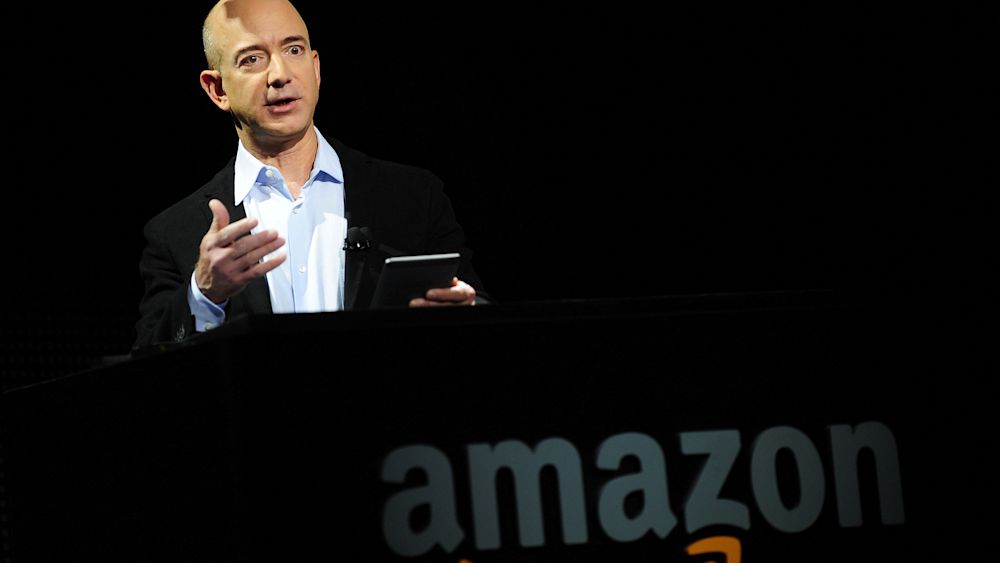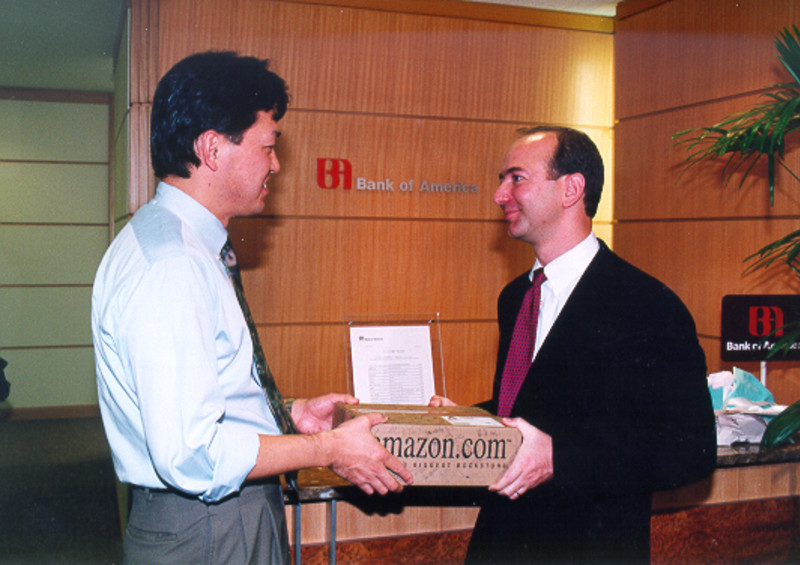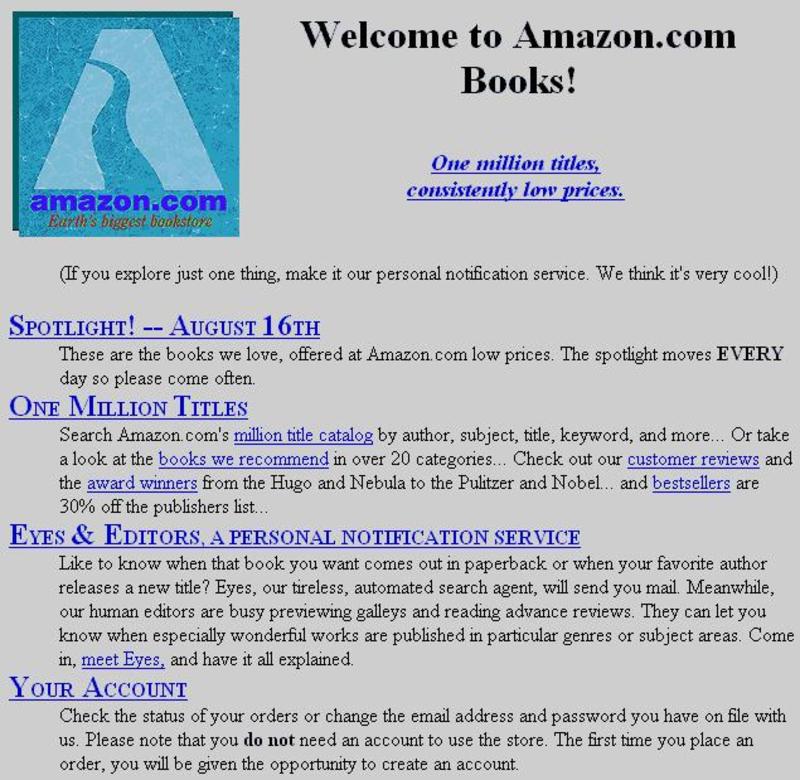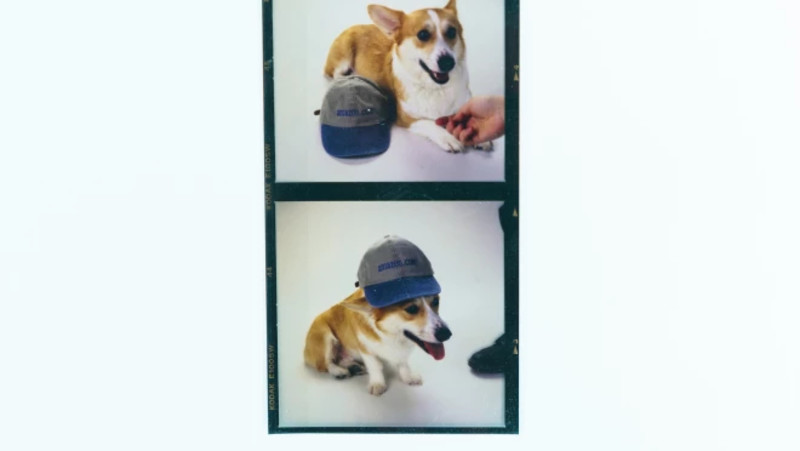Table of contents
Nearly all 21 of Amazon's earliest employees have left the company. Some started their own businesses, others run their own philanthropies. Many others have since retired. Check out who was responsible for the building blocks of one of the most valuable companies

No one could have predicted just how big Amazon would grow to be, certainly not its earliest employees.
Founded by formerly married couple Jeff Bezos and Mackenzie Scott in 1994, Amazon started as an idea for a simple mail-order business for books. It operated out of Seattle and didn’t sell anything other than books until 1998, when it expanded to selling CDs. By the following year, Amazon was branching out to selling toys, tools, electronics and more.

Today Amazon has become a full-blown online superstore. It also operates as a marketplace for thousands of small-to-mid sized businesses. 7,400 products are sold by Amazon’s global selling partners.
It operates in 13 countries and employs over 1.3 million in the U.S. alone. It’s also one of the most valuable companies on the planet making Jeff Bezos’ worth a cool $188 billion.
But the tale of Amazon’s early hires strays a bit from traditional startup lore, like that of Apple or Facebook. Nearly all of Amazon’s earliest 21 employees have since Some are entrepreneurs and founders themselves, others have turned to philanthropy or even retirement.
Check out some of the earliest hires at Amazon and what they are working on today.
Shel Kaphan - VP of Research & Development
Kaphan is as the first employee at Amazon after Bezos.
Kaphan was connected to Jeff Bezos through his network while living in Santa Cruz in 1994. Bezos was working at a hedge fund in New York that spring, when he learned of an opportunity to create a web-based business he wanted to pursue. Kaphan was working at Kaleida Labs, a joint venture between Apple and IBM and was looking around into internet-related startups.
The two eventually met up, interviewed each other, and decided it would be a good fit. Kaphan got to work programming the earliest version of the website right away. He eventually worked his way up to CTO and is considered the of Amazon.com.
Being the first employee of such a historically successful business has its perks. Kaphan is retired from engineering and runs his own philanthropy at the Kaphan Foundation in Seattle.

Paul Davis - Developer
Davis was Kaphan’s first hire on the engineering team and Amazon’s second hire outside of its founders. Prior to working at Amazon, he was working at the University of Washington in the Computer Science and Engineering Department.
He was hired to help Kaphan out on the earliest version of the Amazon website, and while Davis was only with the company for a little over a year, he led the backend development of the first iteration of Amazon.com. He left Amazon in 1996 and is now the founder of Linux Audio Systems, an open source software for recording audio.
Tom Scohonhoff - Technical program manager
Schohonhoff joined the Amazon team in 1995 as its fifth employee. Fresh out of college with a degree in computer science, Scohonhoff actually led the entire customer service department for the first several months of his job.
So engrossed in Jeff Bezos’s notorious dedication to customer service, Scohonhoff told Business Insider in 2017 that he was often the one personally delivering packages to the post office to make sure they made it out in time. He left the company in 2001 and went on to work as a program manager for Microsoft.
Nicholas Lovejoy - Recruiting and Operations
Lovejoy is one of the only early Amazon employees to leave the company and come back while in its prime. After meeting Bezos while working at the hedge fund D.E. Shaw, Lovejoy was working as a high school math teacher in Seattle before he got recruited to come work for Amazon.
He’s credited with the idea of adding packing tables to Amazon warehouses, an idea that stunned Bezos, who earlier suggested buying knee pads for warehouse workers so they could package things on the ground.
After building up its early transportation business, Lovejoy left the company in 1998. But he rejoined again in September 2016 to help build Amazon Transportation Services.
Mike Hanlon - Business Development and Operations
As the seventh employee at Amazon, Hanlon managed real estate operations and managed the telecom systems the company used from 1995 to 1997. His next job with the company was as a software engineer, where he developed the finance and customer service applications for the online store. Hanlon stayed with Amazon until 2001. He now works as the Founder and CEO of Abett, a SaaS product for employers to transfer HR and benefits data to different vendors.
Honorable Mentions: Eric and Susan Benson - Engineer and Managing Editor

Eric and Susan Benson were the second married duo to join the team in 1996. Both Bensons previously worked at Netscape, a dial-up computer service company, before joining Amazon. Eric Benson started as an engineer and worked on the “similarities” system, which recommended books to users based on what they’d already read.
Susan Benson was the company’s first managing editor. The Amazon editorial team was tasked with all the copy and messaging for Amazon’s recommendations program before it was automated. Susan Benson’s connections to Netscape also proved to be super valuable in the early days.
“When we opened up to the public it was she who put Amazon on their “What’s New” and “What’s Cool” pages,” Kaphan said in an interview with “She put us on those lists. Then because the name started with an A, it was above the fold so lots of people saw it. That was, in my opinion, a super important connection for us.
The pair left the company in 2001, but the legacy of their corgi Rufus lives on. He’s believed to be the inspiration for Amazon’s dog-friendly office policies today. Rufus became a mainstay at the company, and is as the reason for Amazon’s dog-friendly policies. The couple is now retired, though Susan Benson worked for several years for the Seattle community center Town Hall.
Create your own free org chart today!
Show off your great team with a public org chart. Build a culture of recognition, get more exposure, attract new customers, and highlight existing talent to attract more great talent. Click here to get started for free today.




